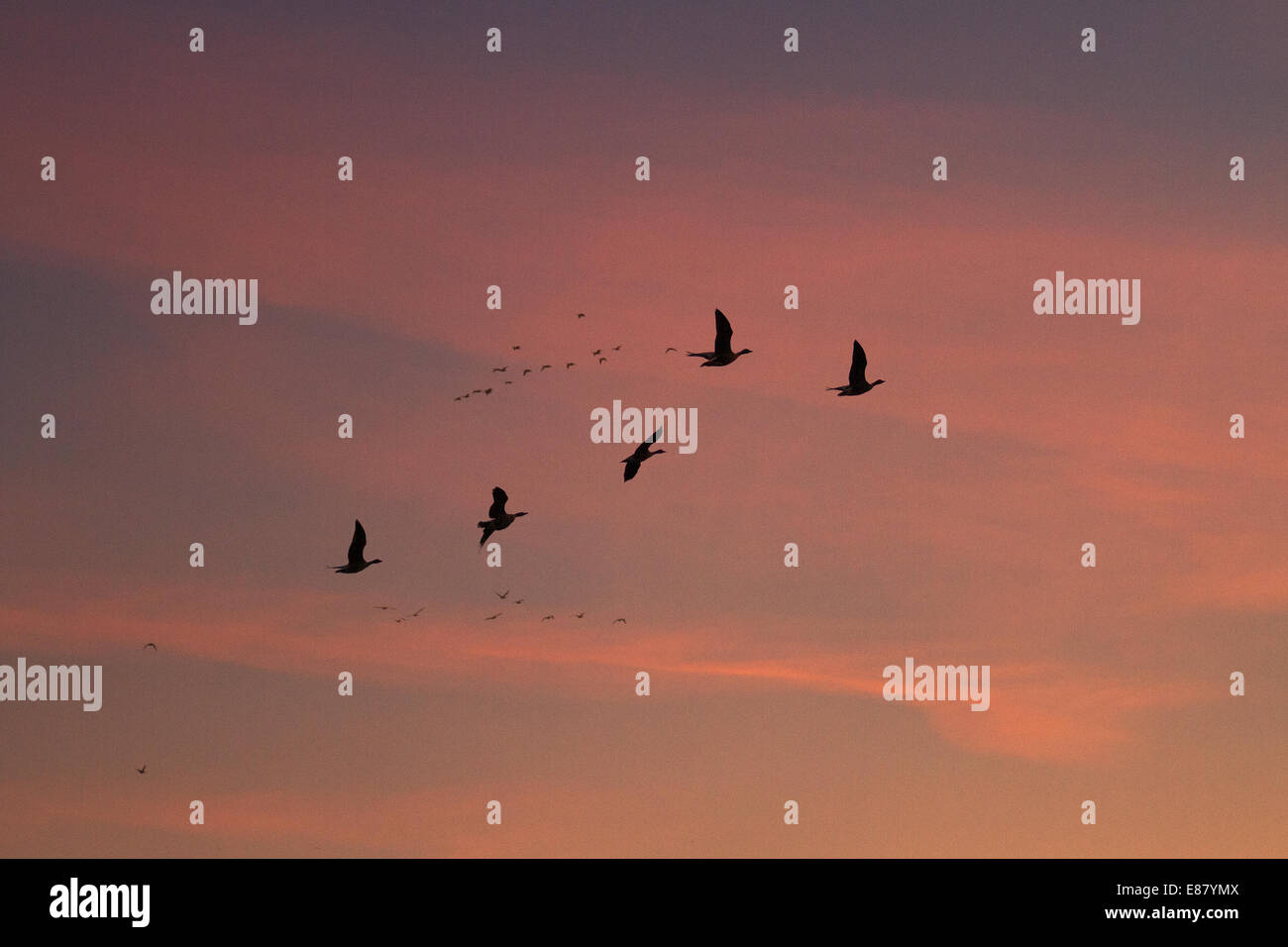Flock of birds in the sky at dawn. Southport, Lancashire, UK 2nd October, 2014. Plummeting temperatures result in grass frost and fog as Flocks of Pink-footed geese fly near Martin Mere Wetland Centre where over 35,000 of them roost on the site. Large flocks have arrived in the last few days after having made the 500 mile journey from Iceland to spend the next month in Lancashire.

Image details
Contributor:
Mar Photographics / Alamy Stock PhotoImage ID:
E87YMXFile size:
24.7 MB (1.2 MB Compressed download)Releases:
Model - no | Property - noDo I need a release?Dimensions:
3600 x 2400 px | 30.5 x 20.3 cm | 12 x 8 inches | 300dpiDate taken:
2 October 2014Location:
Southport, Lancashire, UKMore information:
This image could have imperfections as it’s either historical or reportage.
The pink-footed goose is a medium-sized goose, smaller than a mute swan but bigger than a mallard. It is pinkish grey with a dark head and neck, a pink bill and pink feet and legs. This species does not breed in the UK, but large numbers of birds spend the winter here, arriving from their breeding grounds in Spitsbergen, Iceland and Greenland. Internationally-important numbers of pink-footed geese now spend the winter in the UK. Over the last 30 years, there has been a huge increase in the number of geese travelling throughout Lancashire, which some estimates calculate as around a quarter of the total Icelandic population of Print-feet. Around dawn the marshes can be seen to be covered in up to 25, 000 geese, but with the arrival of further flocks numbers are expected to rise to up to one hundred thousand. They feed in the arable farmland on post-harvest cereal stubbles, sugar beet tops and winter wheat crops. The RSPB advise that damage to crops can be minimised with careful management.